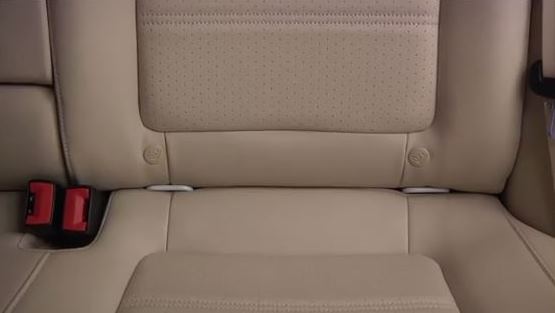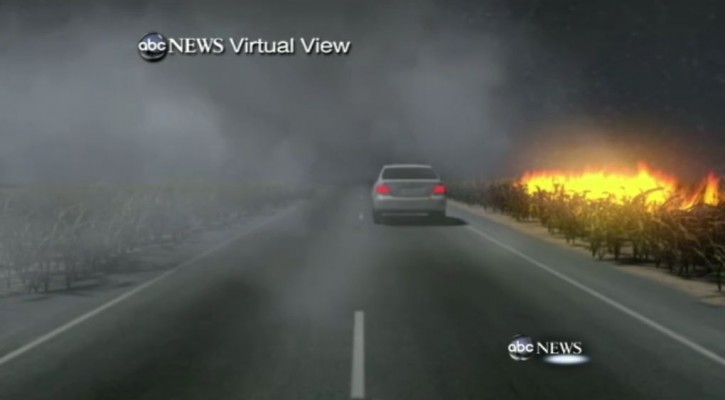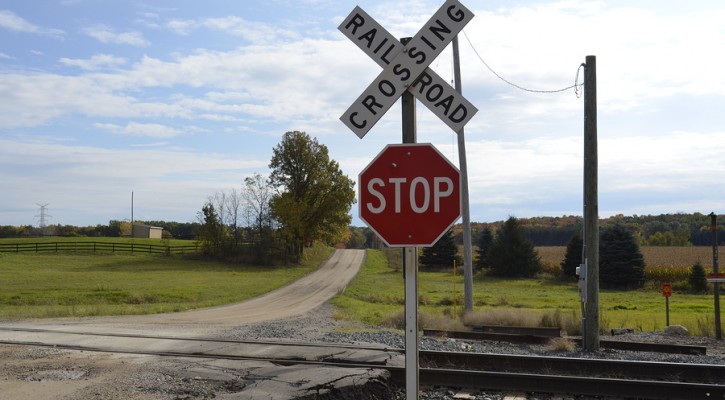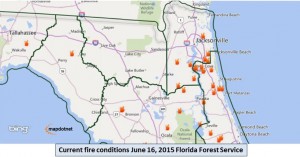Category Archive: Safe Driving

Prescription Sleeping Pills Lead To Higher Crash Rate
July 7, 2015
A study conducted by the University of Washington School of Pharmacy shows that people using prescribed sleeping pills are at a greater risk for experiencing a motor vehicle crash. The research, published in the American Journal of Public Health, revealed that the risk of a car crash is nearly double among new users of the medications temazepam (Restoril), zolpidem (Ambien, Ambien CR) and trazodone (Desyrel).
The dangers posed by these drugs for drivers is worse for those who have been newly prescribed and the increased crash risk can last for up to a year. Among the three drugs followed in the study, temazepam showed the least risk.
The head researcher, Ryan Hansen was quoted as saying the idea for the research came from a friend who, after taking a prescription sleeping pill, woke up in the kitchen and noticed a bite taken out of some raw pork in the refrigerator.
Over the last few years there have been many instances of what has been dubbed “sleep driving” while using the popular prescription pill Ambien. The most notable story involved US Rep. Patrick Kennedy of Rhode Island who crashed into the gatehouse of the US capitol in the middle of the night. He explained to capitol police that he was late for a vote.
The list of side effects for Ambien include the following warnings;
- “Ambien may impair your thinking or reactions. You may still feel sleepy the morning after taking this medicine, especially if you take the extended-release tablet, or if you are a woman. Wait at least 4 hours or until you are fully awake before you do anything that requires you to be awake and alert.”
- “Some people using this medicine have engaged in activity such as driving, eating, walking, making phone calls, or having sex and later having no memory of the activity. If this happens to you, stop taking Ambien and talk with your doctor about another treatment for your sleep disorder.”
Ambien has become one of the most prescribed drugs in America. The researchers in this study suggested that health care providers need to evaluate the necessity of these sleeping pills vs the risks they pose. They suggested that insomnia can be treated without sleeping pills by lifestyle changes such as reduced caffeine use and exercise.
Any drug that can make you sleepy, including common over-the-counter antihistamines such as Benadryl can affect your driving. You can be arrested for DUI if your driving abilities are impaired by any type of drug including over-the-counter and prescription medications.
Read more: For new users, sleeping pills may double car crash risk

IIHS Rates Child Safety Seat LATCH Mechanisms
June 25, 2015
The Insurance Institute for Highway Safety (IIHS) has come out with a rating list of child safety seat LATCH mechanisms. LATCH (Lower Anchors and Tethers for Children) systems, which have been required equipment on passenger vehicles since 2002, are supposed to make it easier for parents and caregivers to safely install child safety seats. In this first review of LATCH system ease of use, few cars made the grade.
LATCH systems consist of anchor points low on the seat and tether points on the back of the seat. Research shows that child seats installed with LATCH, rather than with vehicle seat belts, are more likely to be installed correctly. Whether or not parents use LATCH correctly depends on the attachment point’s visibility and ease of access.
According to an American Academy of Pediatrics study in 2014, 93 percent of new parents taking their newborn home from the hospital for the first time made at least one critical error in placing or attaching their infant car seat. LATCH systems are supposed to make that process easier but, according to the IIHS, most cars LATCH systems are difficult to find or are difficult to reach making it more difficult to attach car seats.
In conducting their study, the IIHS looked at five different criteria for a vehicle to receive a “good” rating:
- The lower anchors are no more than 3/4 inch deep in the seat bight.
- The lower anchors are easy to maneuver around. This is defined as having a clearance angle greater than 54 degrees.
- The force required to attach a standardized tool to the lower anchors is less than 40 pounds. (The tool represents a lower connector of a child seat, though the actual force required when installing a seat varies depending on the specific connector.)
- Tether anchors are on the vehicle’s rear deck or on the top 85 percent of the seatback. They shouldn’t be at the very bottom of the seatback, under the seat, on the ceiling or on the floor.
- The area where the tether anchor is found doesn’t have any other hardware that could be confused for the tether anchor. If other hardware is present, then the tether anchor must have a clear label located within 3 inches of it.
According to the IIHS, out of 102 models tested, only three models received a good rating; they are:
- BMW 5 series
- Mercedes-Benz GL-Class
- Volkswagen Passat
Out of the rest of the models tested, 44 were acceptable, 45 were marginal, and 10 were rated poor.
To read more and to view all of the models and their LATCH ease of use ratings, visit: IIHS launches ease-of-use ratings of LATCH hardware in vehicles
For information on choosing and installing the right car seat for your child, visit: Parents Central

Conditions Are Right For Super Fog
June 16, 2015
Conditions are right for the formation of super fog in Florida right now and that could make driving treacherous for Floridians.
Despite some recent scattered thunderstorms, North Florida is currently experiencing drought conditions and is considered the driest area in the state. The few recent thunderstorms in the area have built up quickly and then rapidly disappeared however, the lightning created by these storms can strike areas far from the rainfall. Those lightning strikes are causing wildfires and it appears that North Florida may be entering a significant fire season. Already, multiple wildfires have popped up throughout the region.
It’s bad enough when the smoke from these fires crosses over roadways. Heavy smoke can make driving conditions extremely hazardous but, when the smoke mixes with fog, conditions can rapidly turn deadly.
As we all know from our basic science classes, warm air holds a lot more moisture and, when humidity levels near 100 percent, fog can form; especially in the cooler, early morning hours. If the fog mixes with smoke from a wildfire, the water droplets in the fog can coat the smoke particles turning it into what’s known as a super fog. Super fog is much more dense and doesn’t dissipate as quickly as a normal fog.
Super fog has been responsible for some of the largest multi-vehicle crashes in the country.
Super fog caused a multi-vehicle crash on I-75 near Gainesville in January 2013 that killed 10 people and injured more than 20 others. Rescuers couldn’t see the victims but, instead, had to listen for screams and moans to reach the injured.
In January 2008, a super fog on I-4 near Lakeland, FL was responsible for a pileup involving 70 vehicles that killed four people and injured 38 others.
If you encounter thick smoke, fog, or a combination of the two, slow down and get off the road. Turning on your hazard lights may not do any good because the fog can be so thick, your lights won’t be visible to other drivers until it’s too late. Crack your window to listen for crashes ahead and, if possible, get off at the nearest exit.
See more: World News: Deadly Pileup

Airbag Recall Expands To Include 34 Million Vehicles In US
May 21, 2015
The Takata airbag recall was expanded this week to include 34 million vehicles in the US. The announcement was made by Department of Transportation Secretary Anthony Foxx on May 19th.
Previously, Takata had refused to admit that a defect was present in its airbags but allowed that vehicles in areas with high humidity might experience problems. The initial recall of vehicles with Takata airbags installed, was limited to vehicles in Florida, the Gulf states and Hawaii. Now Takata has admitted that there is a defect with the inflators and specifically with the propellant used to inflate the airbags.
The propellants in the inflators use a chemical that can degrade over time. If moisture is introduced into the chemical, it can lead to “over-aggressive combustion” leading to higher internal pressures that can rupture the body of the inflator. The defective airbags are responsible for six deaths and more than 100 injuries.
The airbag recall covers driver side airbags in at least 17 million vehicles and passenger side airbags in an additional 17 million vehicles.
With the admission that there is a defect in the airbag inflators, the airbag recall will now include more vehicle manufacturers than previously thought. Vehicles now subject to the recall are made by the following manufacturers:
- Honda
- BMW
- Chrysler
- Ford
- Mazda
According to the National Highway Transportation Safety Administration (NHTSA), it will take vehicle manufacturers about a week to determine which of their vehicles are affected by the airbag recall order. Takata will create a plan to find and replace the affected vehicles as soon as possible with priority going to vehicles located in states with high humidity.
For vehicle owners who want more information about the airbag recall, NHTSA has created a “recalls spotlight” page on their SaferCar.gov website. Follow the link to VIN lookup.
The VIN is your vehicle’s identification number. The VIN can be found either on an inspection plate on the driver side door jamb or under the windshield on the driver’s side of the vehicle. The VIN can also be found on your auto insurance policy and your insurance ID card.
Vehicle owners affected by the airbag recall should expect to receive a letter in the mail from the manufacturer of your vehicle. The recall notice from your manufacturer will give details about how to comply with the recall. Owners who receive an airbag recall notice shouldn’t ignore it and should attempt to get their vehicle repaired as quickly as possible.
Read more: Department of Transportation announces steps to address Takata air bag defects


